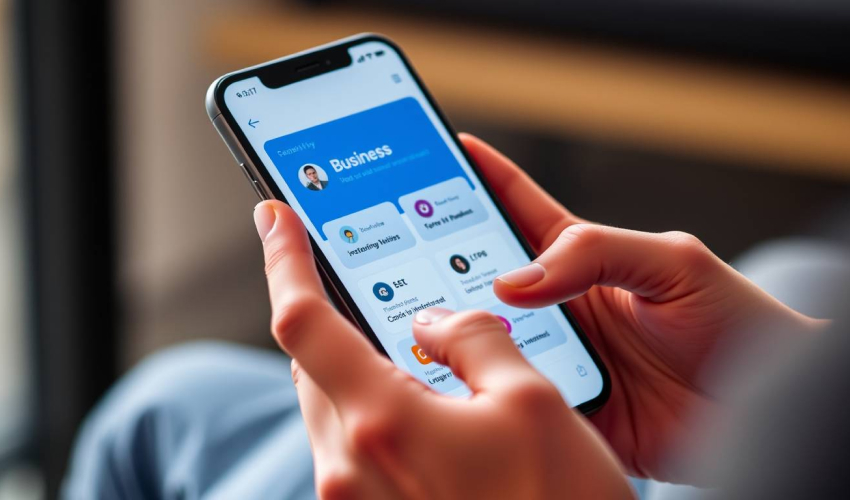PWA for business: increasing conversion rates through browser apps

Why waste months and invest a significant budget in developing a mobile app when you can achieve the same result faster and cheaper? A progressive web app (PWA) is a format that is changing the rules of the game in digital business. It does not need to be installed, loads instantly, and does not take up any space. The result is that smartphone users are more likely to visit the site, stay on its pages longer, and conversions are steadily increasing.
What is a PWA and why does a business need it?
A PWA is a website that behaves like a regular app when opened on a smartphone:
- when a user opens the site in a browser, they can save the page to their desktop as a shortcut. In the future, they will be able to access it directly, without having to open a browser. Externally, this shortcut is no different from a regular app icon;
- PWA has a special background script called Service Worker, which allows you to cache data, ensure instant loading, and support offline mode;
- users can receive push notifications from the site in the same way as from regular apps. The only thing to keep in mind is that the feature is fully available on Android, but on iOS, it is only available starting with version 16.4;
- PWA easily adapts to any screen, whether on a smartphone or desktop;
- new versions (updates) are downloaded in the background and become available without any action on the part of the user.
The advantages of PWA for business are obvious. Progressive web applications work on many devices and are easily opened in popular browsers. There is a decrease in the number of refusals from customers who are not ready to install a new application. Pages are indexed by search engines like a regular website, which makes it easier to promote. Thanks to offline mode, basic functions can be used without an internet connection.
Differences between PWA and mobile sites
The main differences between PWA and mobile sites are convenience, functionality, and technical capabilities:
- PWA allows users to install a shortcut on the home screen of their smartphone, which launches like a regular app. A mobile site always opens through a browser and requires clicking on a link;
- an important advantage of PWA is offline access to the site. A mobile portal does not offer this option;
- PWA supports push notifications on all devices running Android 5.0 and above, as well as on iOS starting with version 16.4. On mobile sites, they are only possible through third-party applications;
- PWA can use device features (geolocation, camera, NFC), while a mobile site is limited to standard web API capabilities and does not support background operation.
In terms of cost, PWA development is more expensive than a mobile site, but it replaces both the site and the mobile app. A regular site is cheaper, but its functionality is significantly limited.
How to implement PWA
Working on a PWA differs from developing a regular site because it involves additional steps that require more time and effort.

Manifest and Service Worker
The PWA manifest and Service Worker are at the heart of any PWA, as they transform a website into a fully functional application:
- the manifest is a JSON file that describes how the application should look;
- Service Worker is a background script that intercepts requests and manages caching, offline mode, and push notifications.
Their implementation helps PWAs be faster, more convenient, and more accessible to users, while offering capabilities that are comparable to native applications.
Caching and offline mode
PWA cache and offline mode allow the site to save basic resources (HTML, styles, scripts, images) in the device's browser. This makes it possible to load quickly when restarting and ensures that the PWA works offline if there is no internet connection.
Notifications and installation
PWA push notifications remind users about new offers, promotions, or items left in their shopping cart. You also need to make sure that users can easily install a shortcut on their desktop by clicking the “Add to Home Screen” button. Remember that the site must be accessible via HTTPS — installation is not possible without a secure connection.
ROI from PWA
Investments in PWA for e-commerce usually pay off in the first year, and here's why:
- savings on development — instead of creating two separate native apps for iOS and Android, you get one solution based on modern web technologies. This allows you to save up to 40% of the budget allocated for project development;
- Revenue growth — fast loading, offline access, and no need to install the app reduce abandonment and increase conversion by 10–30%.
- Reduced marketing costs — Push notifications are cheaper than paid advertising services or email newsletters. At the same time, they bring back a loyal audience to the site, which increases conversions;
- no commissions from app stores. You don't pay Apple or Google for publication, and all updates are automatically sent to the user the next time they visit the browser.
Even with modest estimates, the profit from PWA is noticeable in the first year after launch. For more details, contact the specialists at Megasite, an IT company that has been creating websites in Ukraine for over 10 years and has successfully implemented hundreds of projects for businesses of various sizes.
Your project
Call/write:


